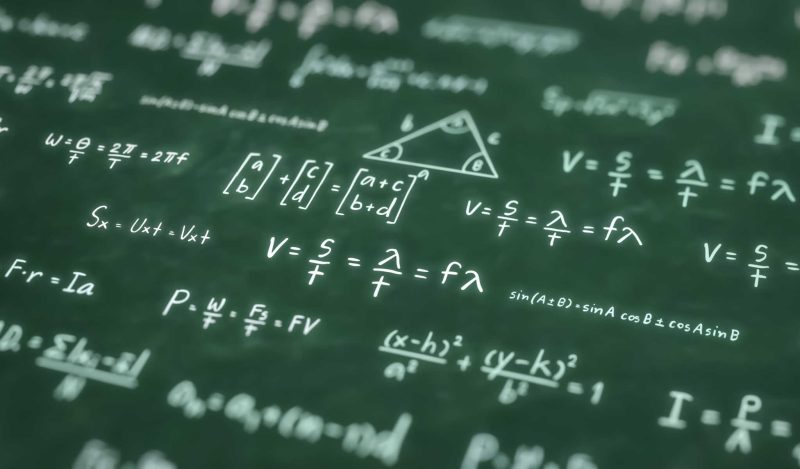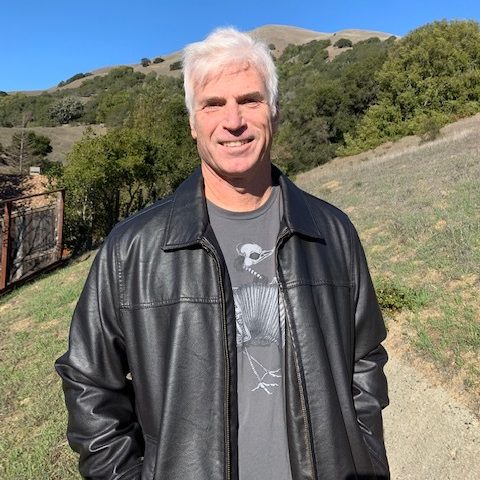Most people who haven’t studied mathematics believe that math is a static edifice of truth. The common perception is that mathematical symbols represent ideas, and there are logical rules that can be used to create new ideas: called proofs of theorems. People view the theorems and the ideas they represent as a picture of the world that is predictable and known. What seems to stop most people from pursuing this deeper knowledge is that it is really hard. And really boring, right?
Over the past few years, this static view of mathematics has manifested as a dependence on models. These were actual mathematical models, as in predicting numbers of infections and how the virus might spread, and also more general mental models, as in depending wholly on science to dictate how we all should behave – Should we quarantine? Should we mask up? Should we stay six feet apart?
This viewpoint holds firmly the idea that the truth we seek is fundamentally dictated by a natural world that is rational, mechanistic, and predictable.
Of course, as individuals we have psychological limitations that prevent us from seeing the truth completely objectively. In his stellar book 12 Rules for Life Jordan Peterson discusses how our perceptions are always focused, and how we miss most of what the world has to show us. He cites psychological studies to prove his point, and illustrates how this observation is very old, being mentioned as the maya in the ancient Hindu Vedic texts.
So we have a psychological restriction that prevents us from seeing everything in the world, and only allows a narrow, focused view that is partly driven by our desires. This is as true for scientists and policy makers as it is for people in other pursuits.
The promise of science, of course, is to get around this problem. There is this method, a way to carefully define experiments, so that this objective truth can be shared with others and we can come to a common understanding of the world around us. The pinnacle of science is this belief in the rational, that models form all the basis of objective reality. But even science has its limitations in the truth it can provide.
Digging deep into science, you arrive at mathematics. Surely, this forms the basis of logical thought, and mathematical truths are complete.
What most people don’t know, unless you get to study math at a graduate level, is that the very foundation of mathematics is not as stable as you might think, and that the idea of what can or can’t be proven isn’t so cut and dry. Mathematical revelations almost a century ago upset the mechanistic view of the world.
Before the turn of the 20th century, many of the brightest mathematicians were focused on understanding its foundations. To a mathematician the foundations are those very basic elements of understanding that serve as building blocks for everything else. From the foundations, everything else follows.
Bertrand Russell, a logician and philosopher from this time period, worked alongside mathematician-philosopher Alfred North Whitehead to construct mathematics from first principles. Together they produced a gigantic work describing how all of mathematics could be generated from a few basic ideas and rules. The three volume tome, published between 1910 and 1913 was called Principia Mathematica.
To give you an idea of the abstractness of this pursuit, it begins by starting with a fundamental truth of our human perception. It states that we essentially know how to separate one object from another, and then we can start grouping those objects.
So it begins: the first set is that of nothingness. (Really!) But the idea of nothing is something. If we identify the set containing one thing, that nothingness, we now have a set that is bigger than nothing, and that is how we can define the number 1. So it goes, with rules defined for how to get from one mathematical thing to another, the rules of logic, building up the entire known universe of math.
At the time the mathematical community viewed this as a fantastic advance. Debates raged about what it meant for human understanding. For example, if all of mathematical truth could be generated using basic principles and logical rules, why do we need mathematicians at all? A computer (once that is developed) could blindly move forward creating new theorems out of nothing. If you believe that math is the language of nature, then this would provide a mechanistic way to uncover all of nature’s mysteries.
The dreams of the fundamental basis for math lived for a decade and a half until they were dashed forever by a young Czech mathematician named Kurt Gödel. In 1930 Gödel produced a proof explicitly showing that Principia Mathematica was incomplete. The essence of what he said is that within any formal system:
There are things which are true that cannot be proven true.
Amazingly, Gödel proved this assertion by construction. This means that he actually showed that using the rules of Principia Mathematica he could create such a statement, one that was true, but that could not be proven true by the rules. How did he construct such a thing?
He attacked the overarching purpose of Principia with an ingenious new method in logic. With each truth, he associated a number, and with each logical rule, he associated a way to get from truth numbers to other truth numbers. Each step was also associated with a number. Then, using the numbers against themselves, he created a new number, which had to be a truth number, but which you couldn’t get to with the other numbers.
It was this recursive mechanism, where numbers were both statements and instruction steps that inspired this revelation. So he found that there was a number corresponding to a statement which was true within the framework of Principia, but which could not be proven with the rules to generate truth numbers.
With a single blow, Gödel destroyed the years of work of Russell and Whitehead, and scores of other logicians seeking this Nirvana of fundamental truth that would build up all of mathematics, and by extension, our understanding of the physical universe.
Essentially, he used the power of logic and numbers against itself.
This is important.
No matter what you did as a mathematician, no matter what model you created, no matter how carefully you defined the fundamental assumptions and rules, you could never achieve a complete understanding of the subject you were attempting to study.
Gödel’s work exists only in the realm of mathematics. It does not prove anything in the scientific or human realm except where these intersect with the math. But it can inform real decisions in our lives.
We constantly have ideas presented to us by the experts that show us a way of living and believing. They are all models, presumably based on rationality and logic. These ideas are presented as an end-all. They are presented as if there is no other truth. Gödel showed us that this mechanistic view of nature doesn’t hold up against the most basic scrutiny of logic.
There are human truths.
There are spiritual truths.
There are deeper truths in the cosmos that we are not allowed to understand.
Whenever a politician, or an authority, or even a friend tells you that all is known, that there is a model which defines the truth, and that by following the model the future will be known, be skeptical. There are mysteries beyond human understanding that escape even the deepest logical reasoning of man.
And that was proven, by a man.
Join the conversation:


Published under a Creative Commons Attribution 4.0 International License
For reprints, please set the canonical link back to the original Brownstone Institute Article and Author.









